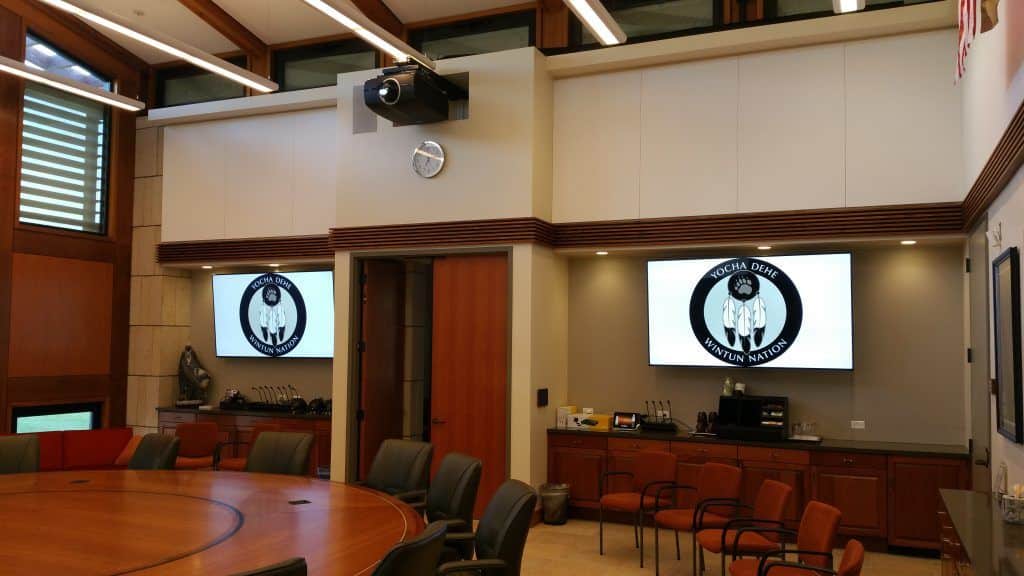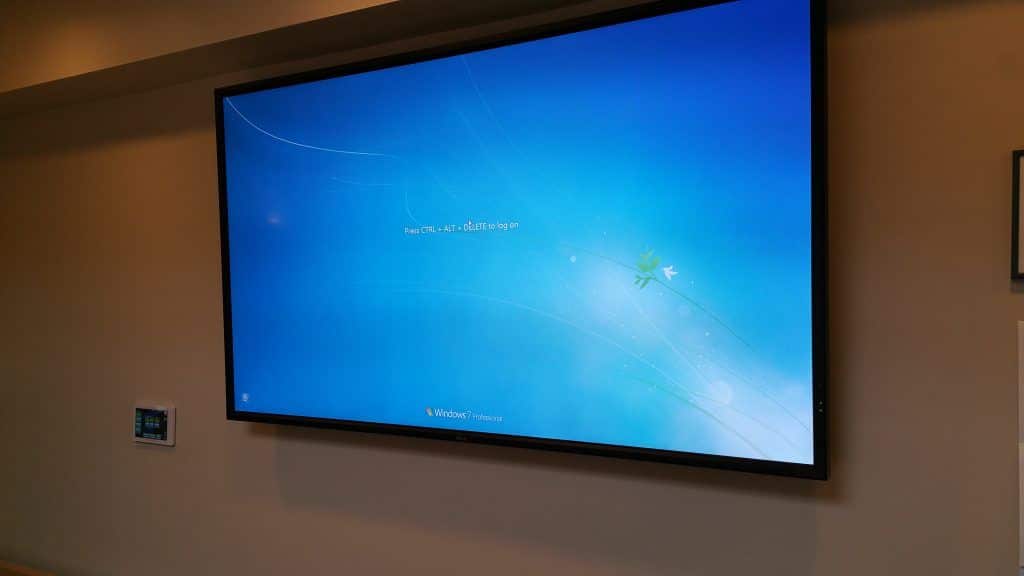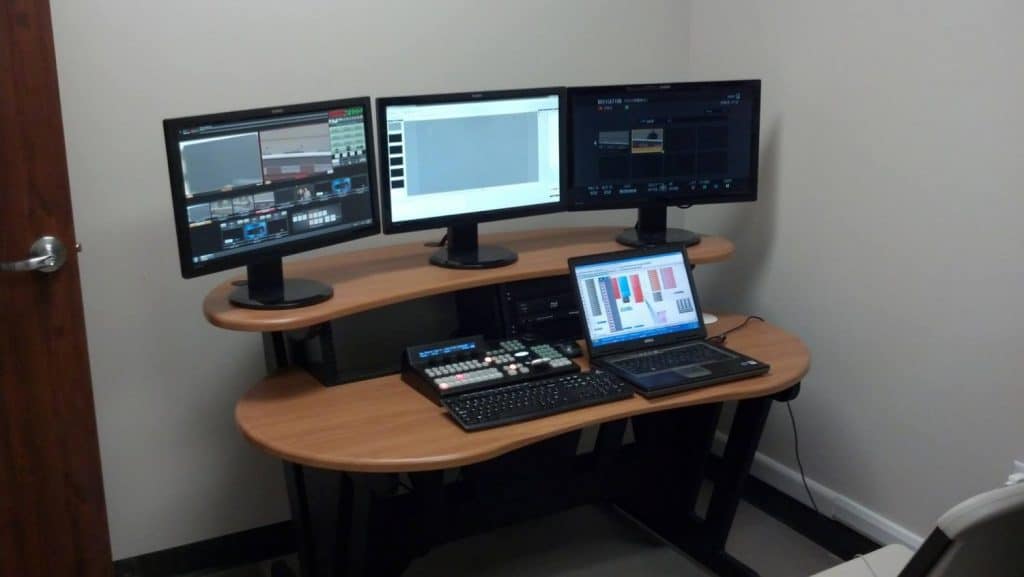Category: Uncategorized
4-5-22
Due to the ongoing massive supply chain disruptions many items that normally were in stock can be on long back orders for up to 26+ weeks. This initial back order problem started to surface in the 2nd quarter of 2021 of around 8 weeks. Manufactures have progressively extended these lead times just like a moving target for reasons that are out of their control, the global chip shortage. Currently as of March of 2022 certain key products may now require an estimated 39 week lead times which puts the handcuffs on all new orders. This has caused a unprecedented disruption in the efficiency that business is conducted, and building integrated AV systems which rely on all the pieces of the puzzle for them to function as a system. The massive shortages of chip sets, semiconductors, resin, wood, certain types of metals and slower production capability, shipping delays has led to the extremely long back orders and affected pretty much all industries around the world.
We will continue to do our best to work through this frustrating supply chain problem that has impacted the entire world for the past 2 years.
Bill Proud
Please click the link to the article below from SVC published on 5-21-2021.
See how commercial displays specifically designed for business environments deliver key benefits that are missing from low cost consumer TVs.
Consumer vs Commercial Flat Screens.PDF


Wireless Microphone Operations and Prohibitions after October 13, 2018
Transition of Wireless Microphones out of the 600 MHz Band.
In the May 2014 Incentive Auction Report and Order, the FCC adopted rules to implement the broadcast television spectrum incentive auction, which will involve reorganizing the existing television band and repurposing a portion of the UHF television band for new wireless broadband services following the close of the incentive auction.
FCC 14-50 As a result of this auction, which closed on April 13, 2017, spectrum on most 600 MHz frequencies – specifically the 617-652 MHz and 663-698 MHz frequencies – has been repurposed for the 600 MHz service for wireless licensees. DA 17-314 The spectrum that is used by these 600 MHz service licensees will no longer be available to wireless microphones in the coming years, as discussed below. All wireless microphone operations in the 600 MHz service band must cease no later than 39 months after the close of the incentive auction. FCC 14-50 – which is July 13, 2020. DA 17-314. And, wireless microphone operations must cease earlier if such operations could cause harmful interference to any 600 MHz service licensee’s operations. In particular, wireless microphone users must cease operation in frequencies in any areas where a 600 MHz service licensee has commenced their operation or is conducting its first field application testing. FCC 15-140
The FCC has provided for a transition period of up to 39 months to help smooth the transition as wireless microphone operators obtain new equipment and transition out of the repurposed 600 MHz service band (617-652 MHz / 663-698 MHz) to other spectrum. During the transition period, which ends on July 13, 2020, these operators may continue to access the spectrum that has been repurposed to 600 MHz service licensees under certain conditions. Specifically, wireless microphone users may operate on the 600 MHz service spectrum – the 617-652 MHz and 663-698 MHz frequencies – only if they do not cause harmful interference either to the existing broadcast television operations (which also must cease operating in the band no later than January 13, 2020) or to the 600 MHz service wireless licensees’ operations in the band. Wireless microphone users also must accept harmful interference from those broadcast television and 600 MHz service licensees. FCC 14-50, FCC 15-100, FCC 15-99, FCC 15-140
Wireless microphone users, whether licensed or unlicensed, may continue to operate on a secondary basis in the bands that continue to be available for and used on a primary basis by broadcast television (TV channels 2-36). Use of these TV band frequencies, which fall below 608 MHz, remain available for wireless microphone use after the incentive auction. FCC 15-100, FCC 15-99 Licensed wireless microphones may also operate on the specific frequencies in the 600 MHz duplex gap (652-657 MHz), and unlicensed wireless microphones may operate on a portion of the 600 MHz guard band (614-616 MHz) or a portion of the 600 MHz duplex gap (657-663 MHz). FCC 15-100, FCC 15-99, DA 17-314
As discussed above, licensed wireless microphone users also may operate in other spectrum bands, including portions of the 169-172 MHz band, the 900 MHz band, the 1435-1525 MHz band, and the 7 GHz band. Part 74, Subpart H Wireless microphones may also operate on an unlicensed basis in several other bands, including the 902-928 MHz band, the 1920-1930 MHz band, and the 2.4 GHz band. FCC 15-100
Wireless Microphone Sales
Going forward, anyone selling a wireless microphone or other device designed to operate in the restricted 600 MHz wireless service band (617-652 MHz / 663-698 MHz) will be required to notify buyers at the point of sale that the device may no longer be used after July 13, 2020, and that users may be required to cease operation earlier if using the device could cause harmful interference that disrupts wireless communications for new service licensees. DA 17-709
The manufacture, import, sale, lease, offer for sale or lease, or shipment of wireless microphones or similar devices intended for use in the United States that operate on the 600 MHz service band frequencies (617-652 MHz and 663-698 MHz) is prohibited after October 13, 2018 ( See FCC 15-100, FCC 15-99, DA 17-314, FCC 17-95).
https://www.fcc.gov/wireless/bureau-divisions/mobility-division/wireless-microphones
Shure Microflex Advance MXA910 Ceiling Array Product Overview
The Microflex® Advance™ MXA910 Ceiling Array is a premium networked array microphone for AV Conferencing that captures best-in-class audio from above the meeting space with Shure proprietary Steerable Coverage™ technology and an intuitive user interface that allows for simple configuration of presets, templates and polar patterns.
Shure Microflex Advance MXA310 Table Array Product Overview
The Microflex® Advance™ MXA310 Table Array is a networked array microphone targeted at AV Conferencing applications where premium audio and a low profile appearance are paramount. Shure’s IntelliMix® DSP Suite Steerable Coverage™ technology deploys four discrete zones of table coverage.









